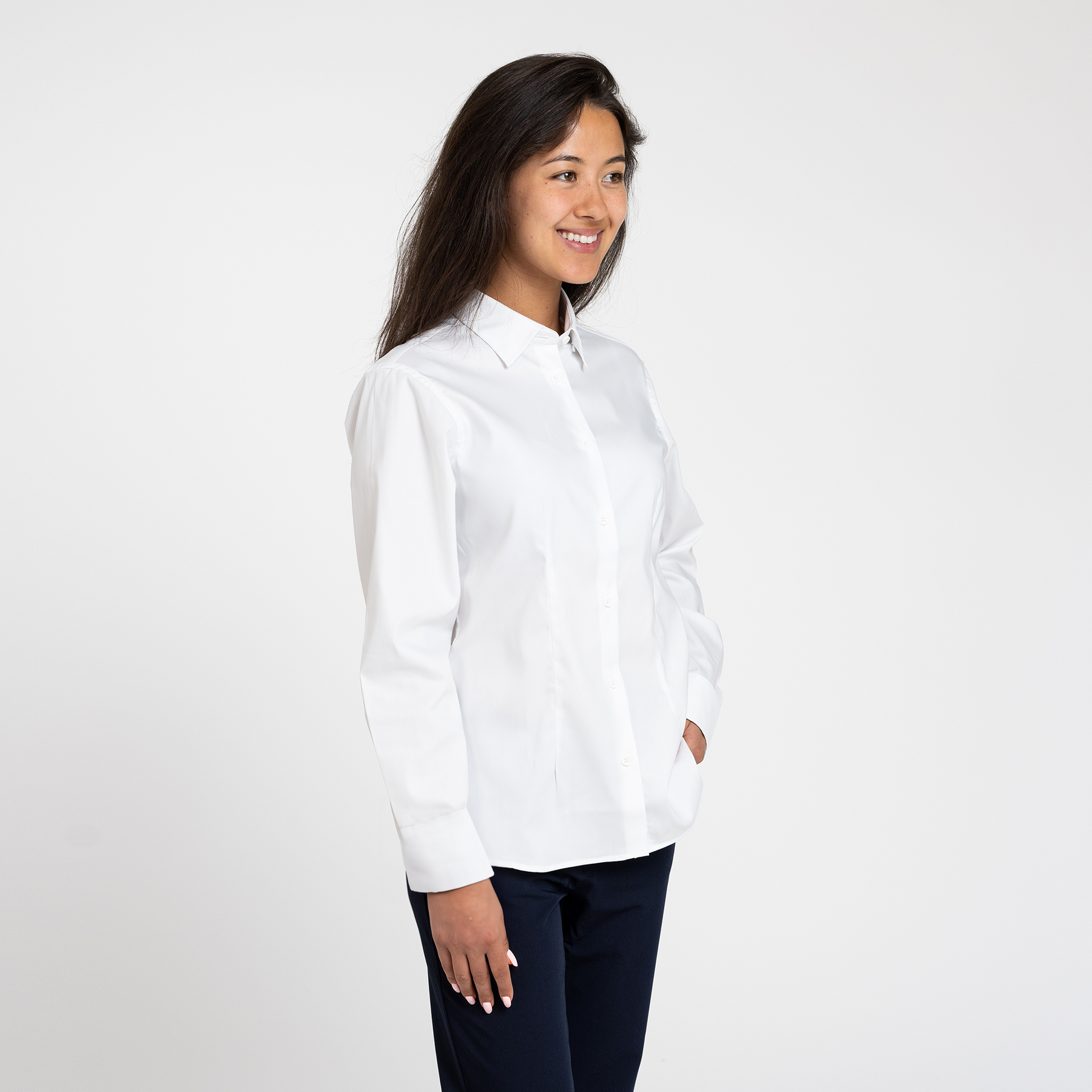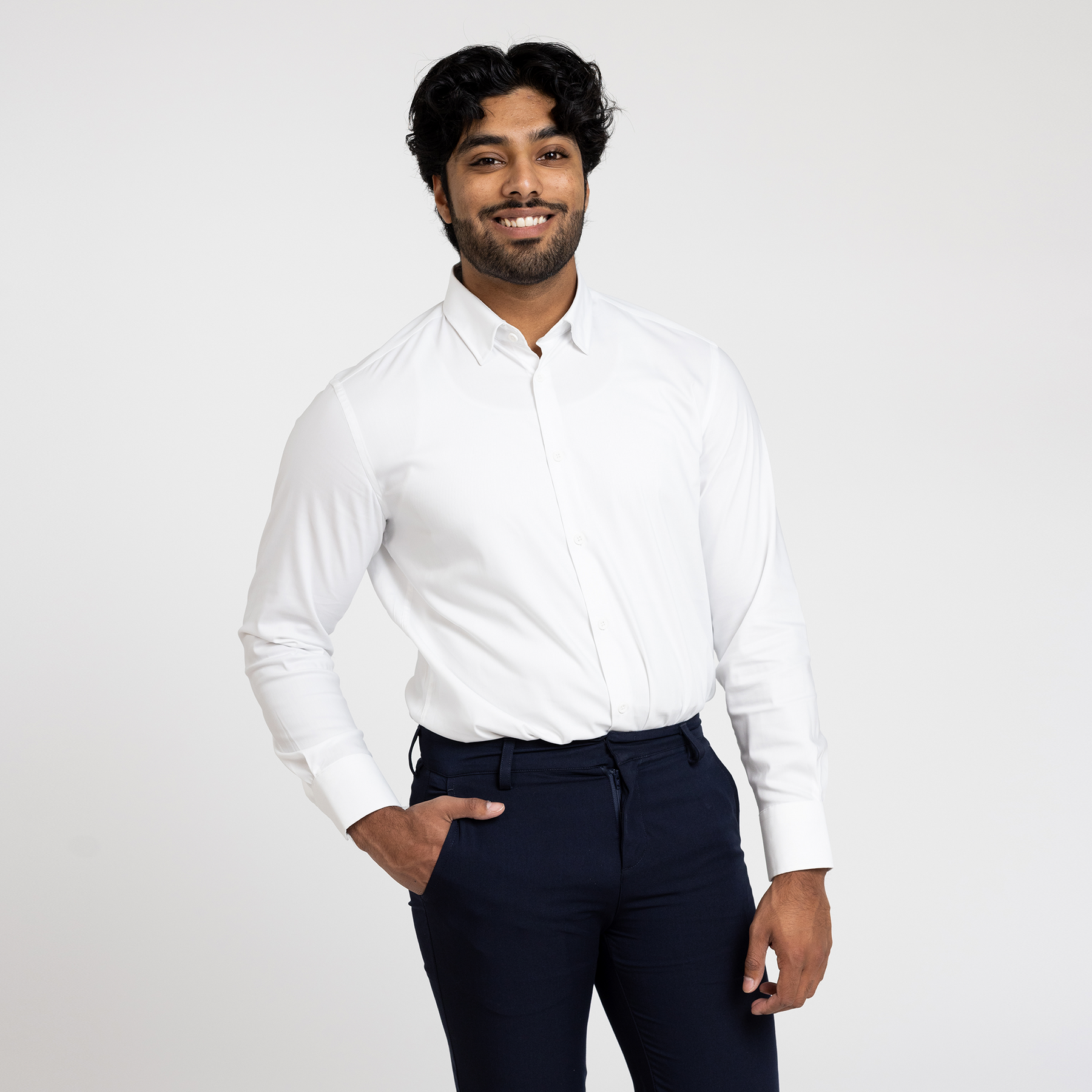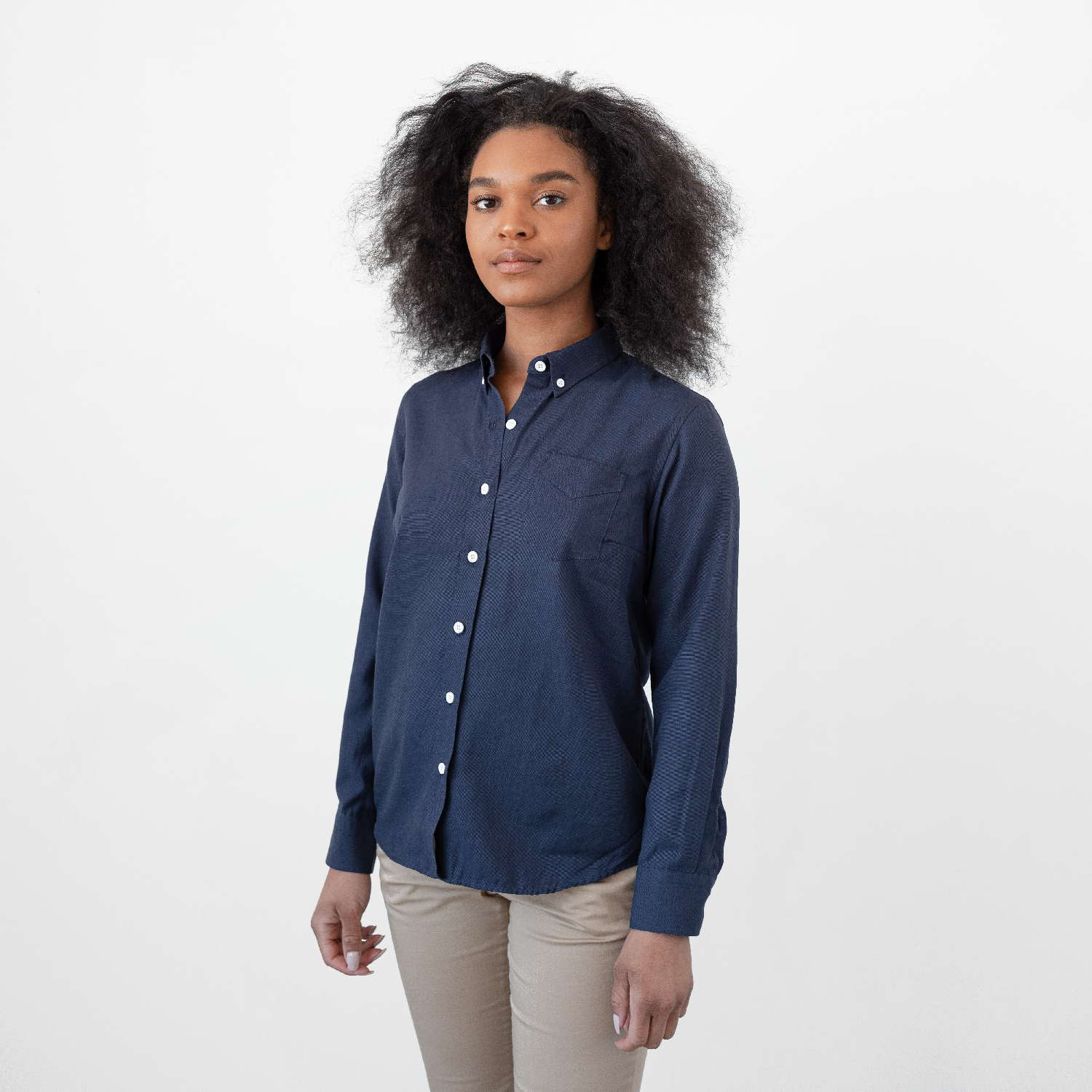How Should a Dress Shirt Fit
When it comes to professional attire, few items are as essential as a crisp, well-fitted dress shirt. A properly tailored shirt pulls an entire uniform together, while an ill-fitting shirt can undermine branding, style, and credibility. For optimal comfort, range of motion, and sharp appearance, dress shirts must check all the boxes.
At Stock, we understand the intricacies of proper shirt fits and tailoring. With years of providing hospitality uniforms in Chicago, including for some of the city's best-known venues, we have mastered dressing staff for success. This article explains what constitutes a great dress shirt and how to achieve it.
Dress Shirts: What to Consider

A winning dress shirt fit balances multiple factors: ease through shoulders, chest, and torso along with proper sleeve, collar, and cuff length. Here is what to focus on:
Torso
The dress shirt should skim the torso smoothly without bulging, pulling, or gapping between buttons. The fabric should drape naturally without hanging too loose or feeling too restrictive. Aim for just enough ease so you can move without constraint., excess fabric looks sloppy.
Additional tips:
- Opt for non-iron or wrinkle-resistant fabric that will look crisp (e.g. poplin, broadcloth)
- A proper dress shirt length falls around mid-fly with dress pants on
Chest
With arms relaxed at the sides, ensure there’s adequate room through the chest without excess fabric bunching or billowing. A simple test: button the shirt, lift the arms out to the sides, then let them fall back down. If this action causes the shirt to pull open and gap, the chest is most likely too tight.
Additional tips:
- Look for some natural stretch for range of motion (e.g. 2-3% spandex or elastane blended)
- A pucker at the center front button is another sign of chest size being too small
Collar
Size the dress shirt collar to lightly graze the neck when the top button is fastened. Ideally, you should be able to slide one finger between the collar and neck. If more than two fingers fit, the collar is probably too loose.
Additional tips:
- The collar band should measure about an inch to properly frame the face
- Avoid extreme point lengths that extend far past the lapels
Cuffs
Shirt cuffs wrap around the wrist bones, so their circumference must allow for comfortable buttoning without pinching. The shirt cuff should organically meet about halfway up the hand when the arms are relaxed and extended.
Additional tips:
- One button is more formal, and two buttons more stylish for double cuffs
- French cuffs that accept cufflinks should have about an inch of exposed arm skin
Shoulders
The shoulder seam should hit right at the bony edge with the fabric extending just to the shoulder’s parameters. If it’s too small, movement will feel restricted. Too large and it will billow and slump off the shoulders. Proper shoulder alignment also ensures the sleeves roll correctly.
Additional tips:
- Padding can square and enhance shoulder line on slim frames
- Seam puckering indicates too small a shoulder size
Sleeves
Properly set dress shirt sleeves should end right at the hand to meet jacket sleeves cleanly. For a dress shirt under a suit jacket, the dress shirt sleeves extend to where the wrist meets the hand, keeping the arms covered even when gesturing yet allowing shirt cuffs to emerge around a 1⁄4 to 1⁄2 inch.
Additional tips:
- For maximum arm mobility, lean toward a higher armhole
- Diagonal creases point to sleeve pitch issues in shoulder and armhole areas
Slim vs Loose Dress Shirt Fits

When selecting dress shirts for your hospitality venue's staff, you have two main options - slim fit and classic fit. Consider the following contrasts when deciding:
Slim-fit shirts contour the body for a polished, professional silhouette. The narrower cut flatters athletic figures best, so if your staff skews younger or on the leaner side, a slim-fit shirt is likely the better choice. However, the tailored cut can seem restrictive for bigger or taller body types.
The classic fit allows more ease through the chest and sleeves for comfort. The looser drape hides flaws well and allows easy movement, making it ideal for a diverse range of body types. However, this cut can appear schlumpy or messy if poorly sized. For casual shirts, you can opt for more relaxed fits but still aim for appropriate sleeve length.
Stock's Coolmax Dress Shirt is a flexible dress shirt made of durable, wrinkle-resistant fabric and incorporates stretch technology for ease of movement during long shifts. Its clean-finished seams and spread collar with stays make it suitable for almost all types of venues.
Here are additional factors when evaluating slim vs. classic dress shirts for your staff:
- Intended duties - will staff need to bend and reach often? Classic offers more mobility
- Uniformity of heights/builds on the team - consistent figures suit slim lines better
- Formality of venue - slim sharper for upscale; classic relaxed for casual
- Impression you want to convey - slim more posh; classic more approachable
Try sample shirts on employees or measure key members during trials to gauge which silhouette and cut best suits your staff overall. Getting the fit right makes all the difference in presenting a polished venue image.
Stock can work with you to design the best dress shirt for your venue. We tailor custom uniforms loved by venues and their guests alike:
- Signature double-vented white suit coats and dress shirts for RPM Steak servers,
- Blue/white dress shirts and maroon aprons for Lure Fishbar, and
- The textured dress shirts with indigo jeans and waxed jackets for The Madeline Hotel's adventure hosts.
Dress Shirt Measurements and Tailoring
The ideal dress shirt sleeve length falls around the wrist bone to allow the cuffs to show. Take care that the dress shirt fits through the shoulders, chest, and torso is not too loose or tight.
Because every person's body is slightly different, most off-the-rack shirts will need some adjustment for an optimal fit. The first step is knowing the key measurements:
- Neck - Wrap a tape measure around the base of the neck where a shirt collar would sit. Record the circumference.
- Sleeve Length - Bend the arm at a 90-degree angle and measure from the center back of the neck, along the shoulder and elbow, to the wrist bone.
- Chest - Wrap the tape horizontally around the fullest part of the chest, making sure it's parallel to the floor.
- Waist - Measure around the natural waistline, about an inch above the belly button.
Once you know your staff's measurements, a skilled tailor can fine-tune the shirt for things like:
- Torso Taper - Taking in the fabric at the sides to contour the waist.
- Shoulder Width - Adjust how far shoulder seams extend to properly frame shoulders.
- Cuffs - Shortening sleeve length and adjusting cuff tightness.
- Sleeve Pitch - Raising or lowering the armhole for a better range of motion.
Getting a custom-tailored dress shirt takes the measurements into account from the start for a personal fit. But even off-the-rack shirts can be professionally adjusted to look and feel custom-made. For example, Stock's Women's Blue Striped Dress Shirt fits true to size, but it can be tailored to adjust the shirt's sleeve length and cuff tightness for an optimal fit.
How to Choose the Best-Fitted Dress Shirt

A well-fitting dress shirt should be smooth and wrinkle-free with no pulling or gaping. Look for a dress shirt that looks sharp and allows your staff to move comfortably.
- Take accurate measurements of the chest, neck, sleeves, etc. as outlined above
- Identify key factors based on your staff’s build, duties, and venue formality to determine the ideal silhouette
- Try on sample slim and classic fit shirts; see which flatters frames best
- Select the shirt size closest to the measurements for each person
- Bring the shirts to a skilled tailor for precision adjustments as needed
- Have staff try on tailored shirts to ensure optimal comfort and range of motion
- Make final tweaks to get each shirt fitting flawlessly
Repeating this process periodically allows you to dial in great fits as staff change over time. Investing in well-fitted shirts makes your team look sharp!
TL;DR
When fitting dress shirts:
- Prioritize ease through shoulders, chest, and torso for mobility
- The collar and cuffs should lightly graze the neck and wrists without pinching
- Slim fits better for lean frames, and classic fits accommodate more body types
- Measure key dimensions to identify the best shirt size/silhouette
- Tailor off-rack shirts for a custom, polished look



